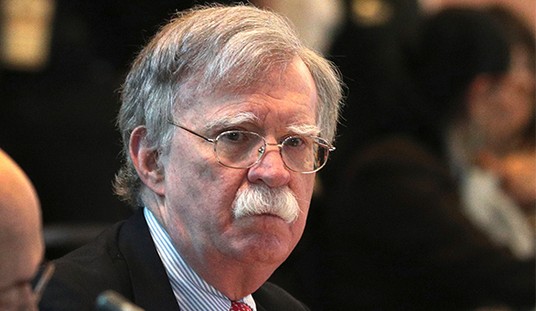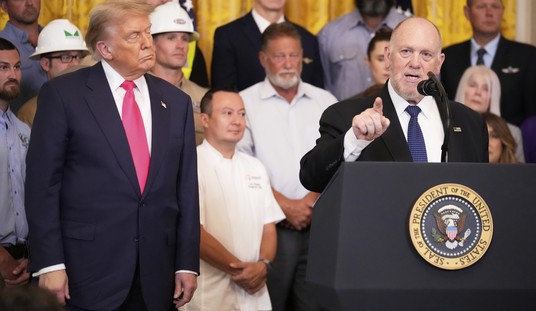
The Tea Party wing of the GOP was a fiscal movement and protest against an encroaching and enlarged federal government that started soon after the inauguration of Barack Obama. In reality, it had it roots in the Bush administration in response to the proposed TARP program. Some (many) on the Left characterized it as racist since the new president was black and it seemed to them not a reaction against his policies, but the man. Had the faces changed, however, there still would have been a movement whether Hillary Clinton or John McCain succeeded.
Overall, it was a decentralized movement with no set agenda and there begins the problems. Had it remained a strictly fiscally conservative movement, it would have likely survived stronger than the state it now finds itself in. Upon his inauguration, Obama embarked on a radically leftist agenda best epitomized by Rahm Emannuel’s suggestion that no crisis go to waste. Besides expanding the scope of the unpopular TARP, he attempted and failed at cap-and-trade legislation, but succeeded at nationalization of the domestic auto industry and health care reform.
There was certainly a libertarian and a populist component to the movement. It was libertarian in respect that it wanted the government out of the economy. It was populist in respect to the fact that it argued that the banks that made the bad decisions should suffer the consequences of those decisions. Oddly, there was some agreement between the Tea Party and some within the Leftist Occupy Wall Street movement.
Some of it’s shortcomings were expressed as what can best be described as a schizophrenic view of the Constitution. While urging that government be returned to the views espoused by our Founders, it also sought to simultaneously change the Constitution in some respects.
Also, some of the Tea Party political attempts were misguided. If it had remained a strictly fiscally conservative movement, there was a set of Democrats- the Blue Dogs- where there was much agreement. But in the fervor for increased political power, many were swept out in the 2010 midterms and the rest in 2012 or 2014. These were Democrats who served a useful purpose in thwarting the Democratic agenda and Pelosi’s caucus. Regardless, it is what it is.
Within the Tea Party, there were two competing lines of thought- the populists and the constitutionalists. Prior to Obama taking office, there was a movement that was taking root in conservative politics that did not accept the mantra of politics as usual. Many within the Tea Party advanced long-held beliefs of smaller, limited government and Obama’s overreach merely spurred the movement forward.
Some have argued that the Tea Party was just right wing populism all along and then use that analysis to explain Donald Trump. Said Michael Lind in Politico:
Think William Jennings Bryan or Huey Long, not Ayn Rand. Tea Partiers are less upset about the size of government overall than they are that so much of it is going to other people, especially immigrants and nonwhites. They are for government for them and against government for Not-Them.
Donald Trump has nicely and deftly tapped into the populist sentiment that both the idle rich and the idle poor benefit from the working masses. He has tapped into an unspoken anger against wealth redistribution and wealth accumulation. It is a populist belief pure and simple. That writer for Politico is attempting to paint the GOP and the Tea Party as being white nationalist all along, a common refrain on Leftist websites.
Conversely, the more grounded, principled and (dare I say) intellectual wing of the Tea Party were the constitutionalists who looked to that document for guidance. Where, other than in writing bankruptcy law, was the federal government granted the power to bail out banks or the auto industry? Where, other than the Commerce Clause, did the government have the right to take over 18% of the United States economy through Obamacare? Where, other than Congress writing immigration laws, did the President have the power to unilaterally grant amnesty to thousands illegal aliens? Where in the Constitution, other than the catch-all “Necessary and Proper” Clause, does it give the federal government the right to shove Common Core down the throats of states? And the list goes on.
In effect, the constitutionalists were more concrete and back-and-white, while the populists operated in the gray areas, especially when those gray areas directly benefited them. Perhaps no one best exemplified the constitutionalist Tea Partier than Ted Cruz. We can debate why Ted Cruz eventually lost out to Donald Trump in the primaries. The bottom line: You kill a cancer before it grows.
But it is true conservatism that has suffered the consequences. Conservative orthodoxy, contrary to popular belief, is not some static monolithic set of beliefs other than an adherence to the Constitution. The defeat of Cruz at the hands of Trump hurts not only the Republican Party, but conservatism in general and, most importantly, constitutional government. Our Founders built into that document what they thought were necessary safeguards against populist sentiments rising to the fore. These mechanisms were designed to guard against the “at-the-time” will of the people because above all else, our Founders feared the will of the people.
They studied and were more than aware of the dangers of populism and direct democracy. California is the perfect example of direct democracy gone awry where voters are presented with at least ten ballot questions every election on issues ranging from the serious (gay marriage, bilingual education) to the absurd (plastic versus reusable grocery bags).
In effect, those who catapulted Trump to the nomination are responsible for the reusable grocery bag election with which we are now confronted. The populists have had their say and it will hopefully result in a thorough repudiation by the electorate.
As with anything, there is some good within right wing populism. Unfortunately, the Trump candidacy has sullied the entire conversation. Perhaps the only silver lining in Trump’s likely defeat is that the Republican Party and conservatism will move back to a more constitutionalist footing. We gave populism a chance and it failed besides giving us a flawed candidate.
The Republican Party will survive provided we make the necessary reforms to guard against what our Founders had the foresight to guard against: momentary populism. We can incorporate, on an over-arching scale, some of the “good” that Trump espoused without deifying the man: secure borders, vigilance against terrorism, free AND fair trade agreements, etc.
Unfortunately, Trump has burnt too many demographic bridges along the way and the electoral future of the GOP will most likely relegate the party to the hinterlands for some time. Perhaps, that is the most unfortunate aspect of Trump’s candidacy and one that his supporters must reckon with for years to come. Yes- Hillary Clinton is a bad choice, but the silver lining is that she may have momentarily driven a stake in the heart of Trump and his ilk, although I suspect they will be back. If Trumpism is to define the Republican Party in the future, it is time for me and others with a very healthy respect for the Constitution to consider other alternatives.













Join the conversation as a VIP Member